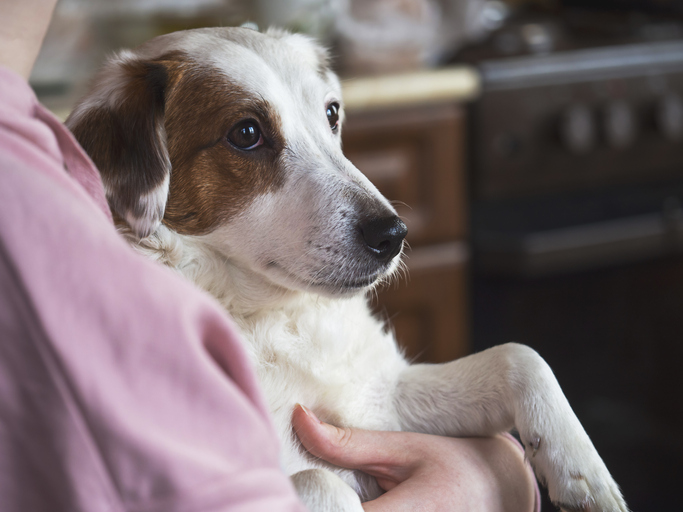Dog Anxiety in Santa Clarita, CA: Signs to Watch for and How to Help Your Pet

Just like people, dogs can have issues with anxiety. Dogs that have anxiety can be hard to keep happy in a home or an apartment, and they can suffer from all kinds of added health issues related to their anxiety. When your dog suffers from anxiety, you might be eager to help them to feel better and not be so stressed. Stress can lead to all kinds of other health issues in dogs, so getting anxiety under control can make a huge impact on your dog’s daily life.
Knowing the signs of dog anxiety can make all the difference in diagnosing this condition and getting your dog the support that they need to feel better. Your vet will likely need to be involved in treatment for this condition, and there are many options that can help your pet to handle stress in a more effective way. When training issues are involved, you might need to get the help of a dog trainer.

Signs of Dog Anxiety
Not all dogs show all of these symptoms, and your dog might not show the symptoms that they display with significant severity.
- Panting
- Pacing
- Depression
- Destructive behavior
- Excessive barking
- Self-harm
- Drooling
- Restlessness
- Hiding
- Digging
- Escape from yards or rooms
Dog anxiety is often pretty easy to identify, but your dog might only show these symptoms when you are away from home or when another pet in the house is gone. Your dog might also show anxiety when you move or when you add a new pet to the house.
Some dogs deal with anxiety all the time on a daily basis, and others are only prone to anxiety when storms happen, if there are loud noises, or if something in their living conditions changes. The severity of the anxiety that your dog displays can be variable as well. All do anxiety can impact your dog’s overall health and well-being, and dog anxiety can disrupt your home and the health of other animals in the home.
How to Help Your Dog With Anxiety
If your dog has anxiety, the first thing that you need to do is take them to the vet.
Medication
Your vet can prescribe medication to help your dog to cope with stress, and they can also make sure that your dog is not suffering from some kind of health issues that are leading to this anxiety. Once your vet has helped you to find a treatment solution for your dog, you might also be able to add some other strategies to improve your dog’s anxious behavior.
Calming Options During Storms
If your dog is anxious when loud noises happen or when there are things like thunderstorms going on, you can help your dog to feel better by playing some white noise in the background. You can also try a thunder shirt or confining your dog in a crate to help them to feel safe and secure despite the noise around them. Sometimes taking your dog for a walk or outside to play can also help break the cycle of anxiety about noises that they can hear but not see.
Crate Training
For dogs that suffer from anxiety when their family is out of town or has left home, crate training can be very helpful. Your dog might also benefit from some training to help them to learn to break the cycle of anxious behavior that can be associated with changes to the dynamics of the home. Separation anxiety can also happen when dogs are split up from other pets in the home or when they are asked to stay at a kennel or go to dog daycare.
Additional Training
Anxiety can be well-managed through medication, but training is almost always necessary to help keep things under control. Your dog likely has learned to behave in an anxious way over time, and this behavior needs to be converted into behavior that is positive instead. Being able to make the change from anxiety to calm behavior can be a matter of training in most cases just as much as it can be linked with altering your dog’s environment to make them more comfortable.
What if My Dog Does Not Improve Right Away?
Some dogs can require weeks or months of retraining to learn not to be anxious all the time. For some animals, anxiety is always a factor that needs to be managed for their optimal well-being. You will need to be prepared to be patient with your dog as they are learning not to be anxious. They might not improve on your timeline, and you could have months of work ahead of you. This is why it’s very important to be cautious about taking on a dog that already has anxiety issues unless you know that you can be patient enough to give them the time they need to get better.
Dog Anxiety Can be Manageable
Dog anxiety can require that you get your dog to the vet to get some medication to help them to feel better, but you will likely also need to make sure that your dog gets some training to help them to break out habits. There are many different reasons that your dog might be anxious, and you could need to provide support through various different kinds of care to help them to get back to feeling their best.
If your dog is anxious specifically due to things like storms or changes in the house, you might have to attend to those conditions when they crop up. Anxiety can be hard to manage, and it can make it difficult to keep your dog healthy or to bond with them on a daily basis. You will want to help your dog with any form of anxiety that they display so that it can succeed in life and be your daily partner.
Talk with your Stevenson Ranch Veterinary Center veterinarian by calling (661) 799-0655 or book an appointment online if your dog could have anxiety.
Check Your Pet's Records
Look no further, PetDesk allows you to view your Pet's Health information, appointment reminders, etc.
Let's Go Shopping
Need a refill on vitamins, food, etc for your pet? Check our our online store.
Book an Appointment
Looking for Veterinary Care? Stevenson Ranch is a place that you can your pet can depend on for exceptional care.
